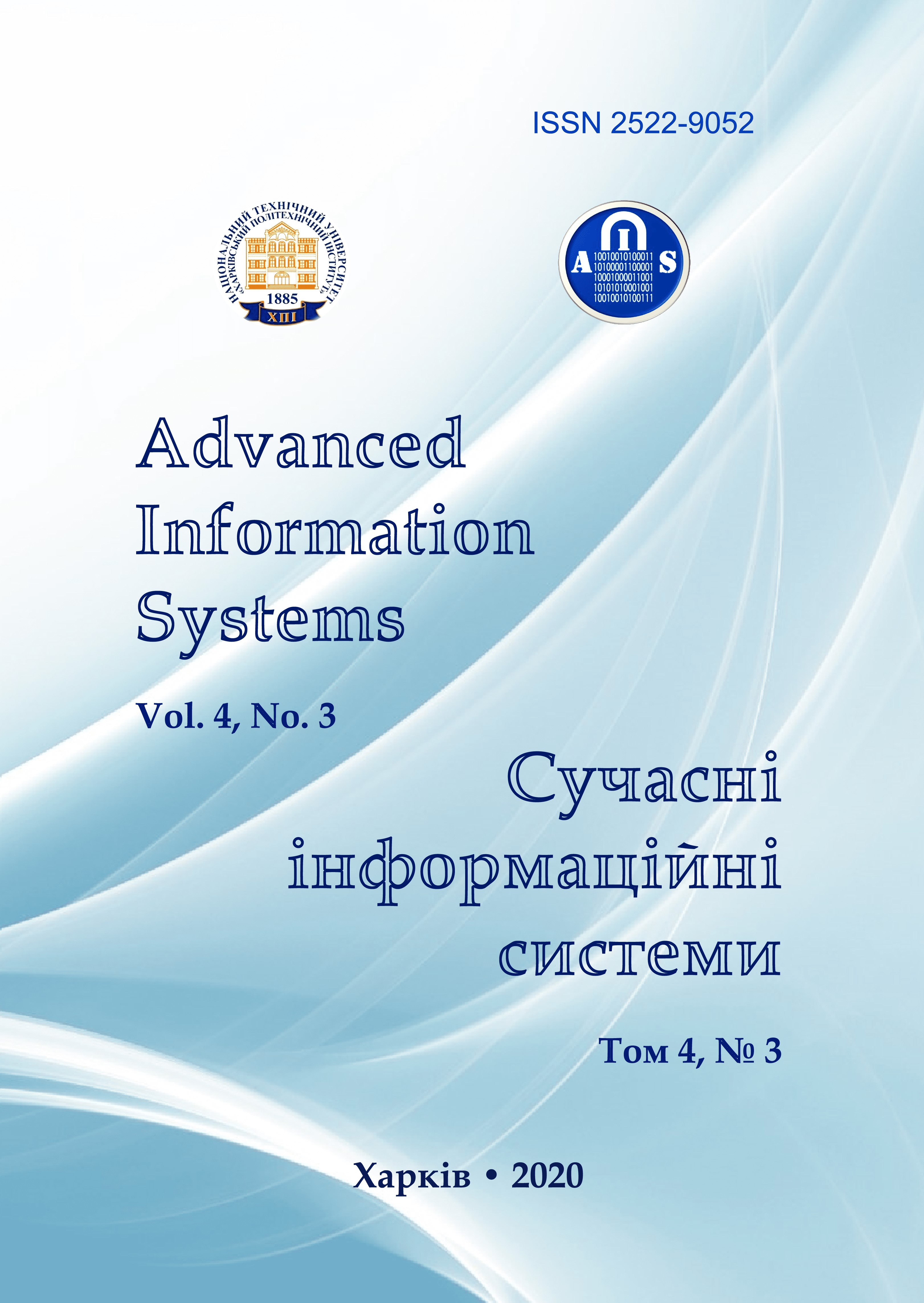CONSTRUCTION OF INFORMATION TECHNOLOGY FOR DEVELOPMENT OF KNOWLEDGE BASE ON IDENTIFICATION OF URBAN STRUCTURES ON DIGITAL SPACE AND AERIAL PHOTOGRAPHS IN THE URBAN ENVIRONMENT MONITORING
Main Article Content
Abstract
Article Details
References
Shikhov, A.N., Cherepanova, E.S. and Ponomarchuk, A.I. (2014), Geoinformation systems: the use of GIS technologies in solving hydrological problems, a workshop, textbook. manual, Perm, 91 p.
De Mers and Michael, N. (1999), Geographic information systems. Foundations, Date+, Moscow, 506 p.
Andrieiev, S. and Zhilin, V. (2020), “Methodology of historical cartographic models atlases creation according to aerial photography data with the use of geoinformation technologies”, Advanced Information Systems, Vol. 4, No. 1, pp. 45-62, DOI: http://dx.doi.org/10.20998/2522-9052.2020.1.08
Andrieiev, S., Zhilin, V. and Melnyk, A. (2019), “The use of anamorphosis cartographic models for geodata analysis”, Advanced Information Systems, Vol. 3, No. 3, pp. 5-16, DOI: http://dx.doi.org/10.20998/2522-9052.2019.3.01
Andreev, S. and Zhilin, V. (2019), “Application of aerophotic data with unmanned aircraft for developing 3D models of terrain”, Control, navigation and communication systems, No. 1(53), Poltava NTU Yuri Kondratyuk, Poltava, pp. 3-16, DOI: http://dx.doi.org/10.26906/SUNZ.2019.1.003
Dennis, A., Wixom, B. & Tegarden, D. (2015), Systems analysis and design: An object-oriented approach with UML, John Wiley & Sons, NY, 525 p.
Bonczek, R.H., Holsapple, C. and Whinston, A.B. (1981), Foundations of Decision Support Systems, Acad. Press, New York.
Anisimova, O.L., Zraenko, D.Yu. and Komosko, V.V. (2010), “Storage of spatial objects as a part of the regional node of IPD UrFO: model of storage”, Spatial data, No. 1, p. 62.
Inmon, W.H. (1991), Building the Data Warehouse, John Wiley & Sons, New-York, 312 p.
Weizmann, V.M. (2002), Design of economic information systems, MUBiNT, Yaroslavl, 213 p.
Terelyansky, P.V. (2009), Decision support systems. Experience of design, Volga State Techn. University, Volgograd, 127 p.
Shannon, K. (1963), Works on information theory and cybernetics, IIL, Moscow, 829 p.
Spirley, E. (2001), Corporate data warehouses. Planning, development, implementation, Williams, Moscow, 400 p.
Ruban, I., Kuchuk, H. and Kovalenko A. (2017), “Redistribution of base stations load in mobile communication networks”, Innovative technologies and scientific solutions for industries, No. 1 (1), pp. 75-81, DOI : https://doi.org/10.30837/2522-9818.2017.1.075.
Kovalenko, А. and Kuchuk H. (2018), “Methods for synthesis of informational and technical structures of critical application object’s control system”, Advanced Information Systems, Vol. 2, No. 1, pp. 22–27, DOI: https://doi.org/10.20998/2522-9052.2018.1.04.
Nechausov A., Mamusuĉ I., Kuchuk N. (2017), “Synthesis of the air pollution level control system on the basis of hyperconvergent infrastructures”, Advanced Information Systems, Vol. 1, No. 2. P. 21 – 26. DOI: https://doi.org/10.20998/2522-9052.2017.2.04.
Yaloveha, V., Hlavcheva, D. and Podorozhniak, A. (2019), “Usage of convolutional neural network for multispectral image processing applied to the problem of detecting fire hazardous forest areas”, Advanced Information Systems, Vol. 3, No. 1, pp. 116–120, DOI: https://doi.org/10.20998/2522-9052.2019.1.19
Ronneberger, O., Fischer, P. & Brox, T. (2015), “U-net: Convolutional networks for biomedical image segmentation”, International Conference on Medical image computing and computer-assisted intervention, Springer, pр. 234-241.
